Discover the Best Board Games for Every Player
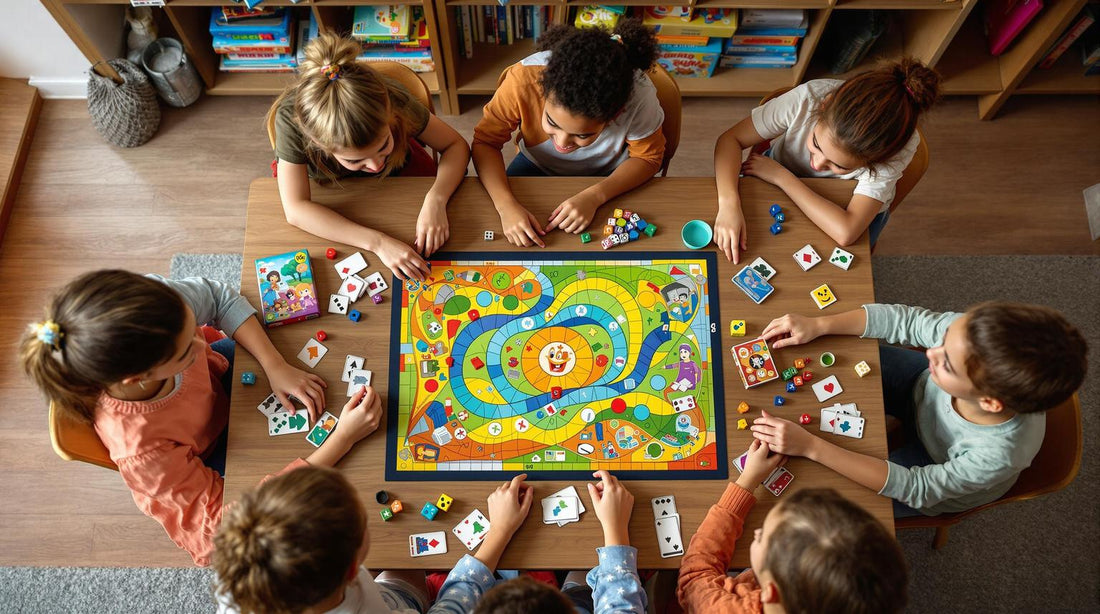
10 Best Board Games for Ages 9-12
Board games for kids aged 9-12 are all about balancing fun and learning. They encourage strategic thinking, teamwork, and creativity while keeping the rules simple enough for preteens. Here’s a quick rundown of the top picks:
- Catan: Junior: Simplified resource management with a pirate theme.
- Ticket to Ride: First Journey: Easy train route-building for younger players.
- Carcassonne: Tile-laying strategy to create medieval landscapes.
- Kingdomino: Combines dominoes with kingdom-building strategy.
- Codenames: Pictures: A visual twist on the classic clue-guessing game.
- Exploding Kittens: Fast-paced, funny card game with quirky illustrations.
- Dixit: A storytelling game with stunning, creative artwork.
- Pandemic: Cooperative gameplay to save the world from outbreaks.
- Blokus: Spatial reasoning and strategy with colorful pieces.
- Ice Cool: Flicking penguins through a school-themed board.
Each game offers something unique, from teamwork to strategic challenges, ensuring hours of fun for kids and families alike.
Top 20 Favorite Board Games for the Family
1. Catan: Junior
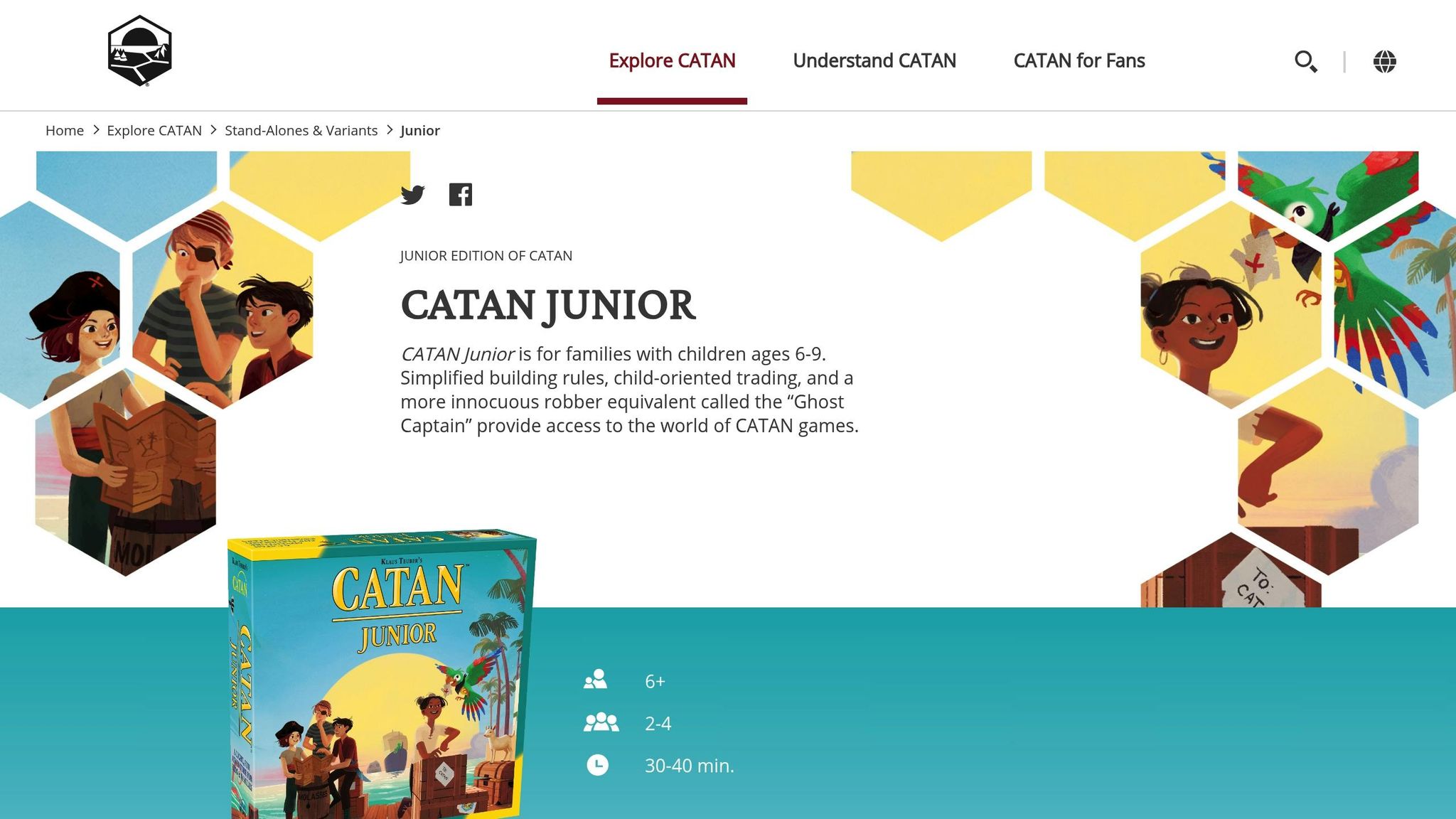
Catan: Junior brings the fun of Settlers of Catan to younger players (ages 9–12) with a lively pirate theme. It simplifies trading and building, making it easier for kids to grasp the basics of strategy.
The game features a fixed board for quick setup and focuses on simplified resource management. Sessions last just 20–30 minutes, keeping players engaged, with the goal centered on building pirate lairs. This straightforward approach makes it a great way for kids to dive into strategic board gaming.
According to Brain Games, Catan: Junior is one of their top picks for introducing kids to more advanced gaming concepts.
2. Ticket to Ride: First Journey
Ticket to Ride: First Journey brings the popular train route-building game to a younger audience with a simplified scoring system. It keeps the fun of connecting cities across North America but with shorter routes and fewer pieces, making it easier for kids to play. Players collect train cards to claim routes between cities, just like in the original game.
The components are designed with kids in mind. Larger train pieces, clear destination tickets, a smaller board, and bold, bright colors make the game easy to understand and enjoyable to play. The colorful map features recognizable city names and clearly marked routes, making it a great pick for kids aged 9-12.
Brain Games highlights First Journey as a fantastic way to introduce children to strategic board games while keeping the whole family entertained.
3. Carcassonne
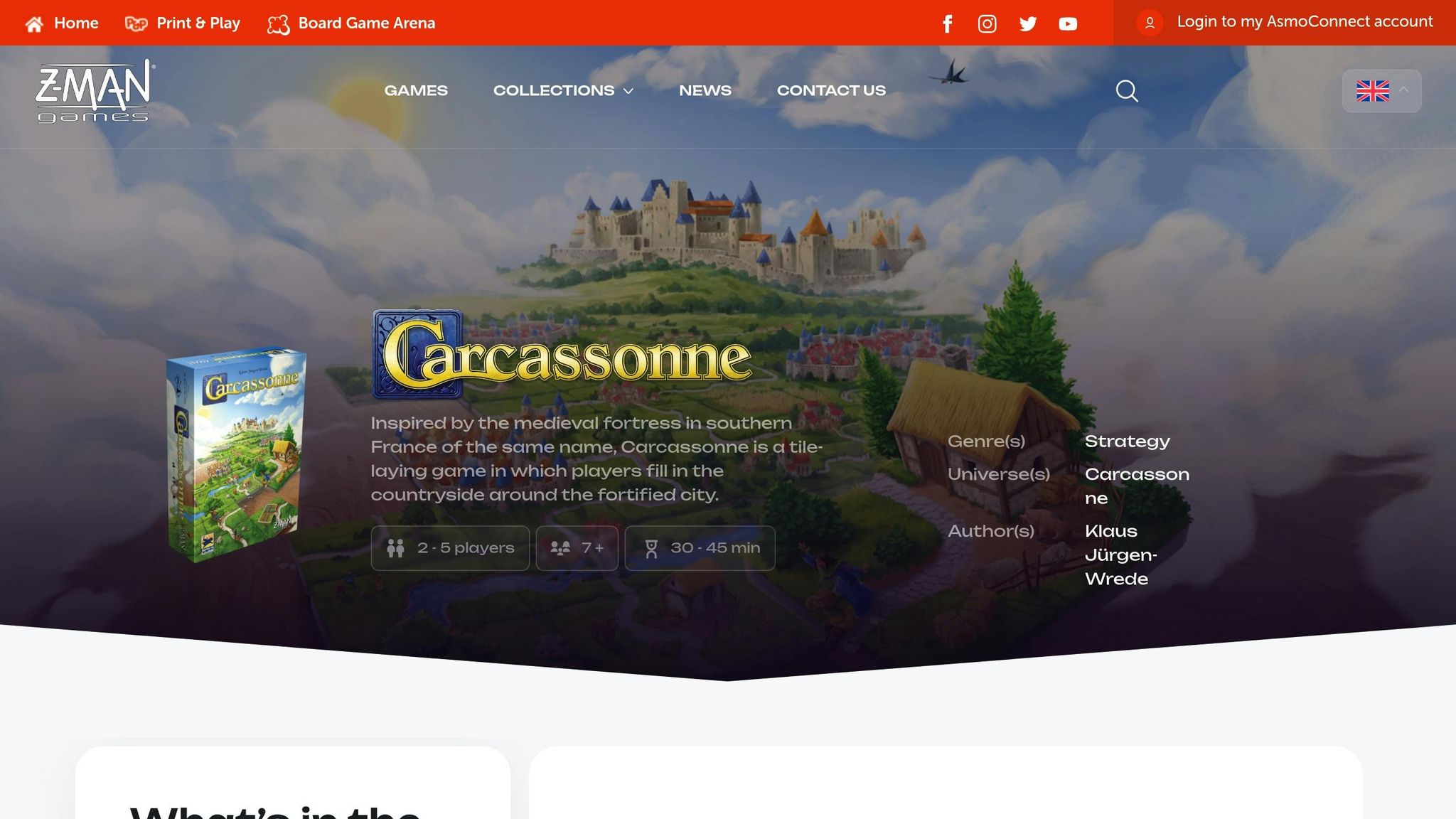
Carcassonne is a fantastic choice for families who enjoy strategy games with a creative twist. This tile-laying game lets players build a medieval landscape by drawing and connecting tiles depicting cities, roads, cloisters, and fields. The result? A unique game board every time you play.
The gameplay combines creativity and strategy as players carefully decide where to place their tiles to complete features and earn points. For younger players, Brain Games suggests starting with the base game, as its straightforward rules strike a great balance between challenge and ease of play. The focus is on completing cities, constructing roads, finishing cloisters, and cultivating fields - perfect for a fun and engaging experience.
4. Kingdomino
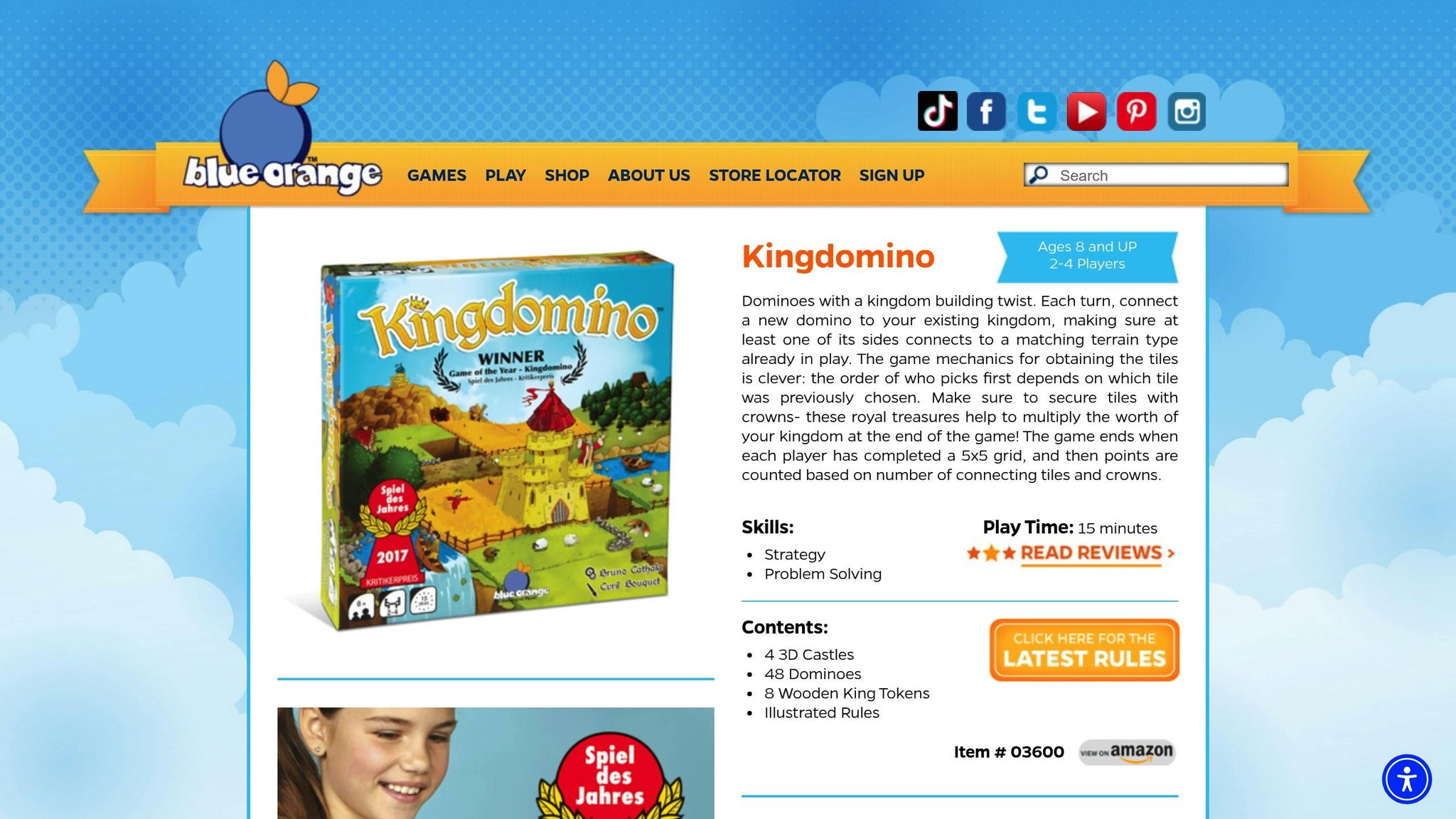
Kingdomino is a fantastic choice for preteens, blending the simplicity of dominoes with the challenge of kingdom-building strategy. Perfect for kids aged 9–12, it offers just the right mix of fun and tactical gameplay.
In Kingdomino, players take turns picking and placing terrain tiles. These tiles feature crown symbols that act as multipliers, encouraging careful planning to maximize scores. The goal? Build the most cohesive and high-scoring kingdom possible.
Key features include:
- Arranging terrain tiles to create a well-organized kingdom
- Using crown symbols strategically to boost scores
- Thinking ahead when choosing tiles to outsmart opponents
This game is easy to learn, yet it keeps players engaged with its strategic depth and ever-changing kingdom layouts. It’s a great way to introduce families to more complex board games while keeping the experience light and enjoyable.
5. Codenames: Pictures
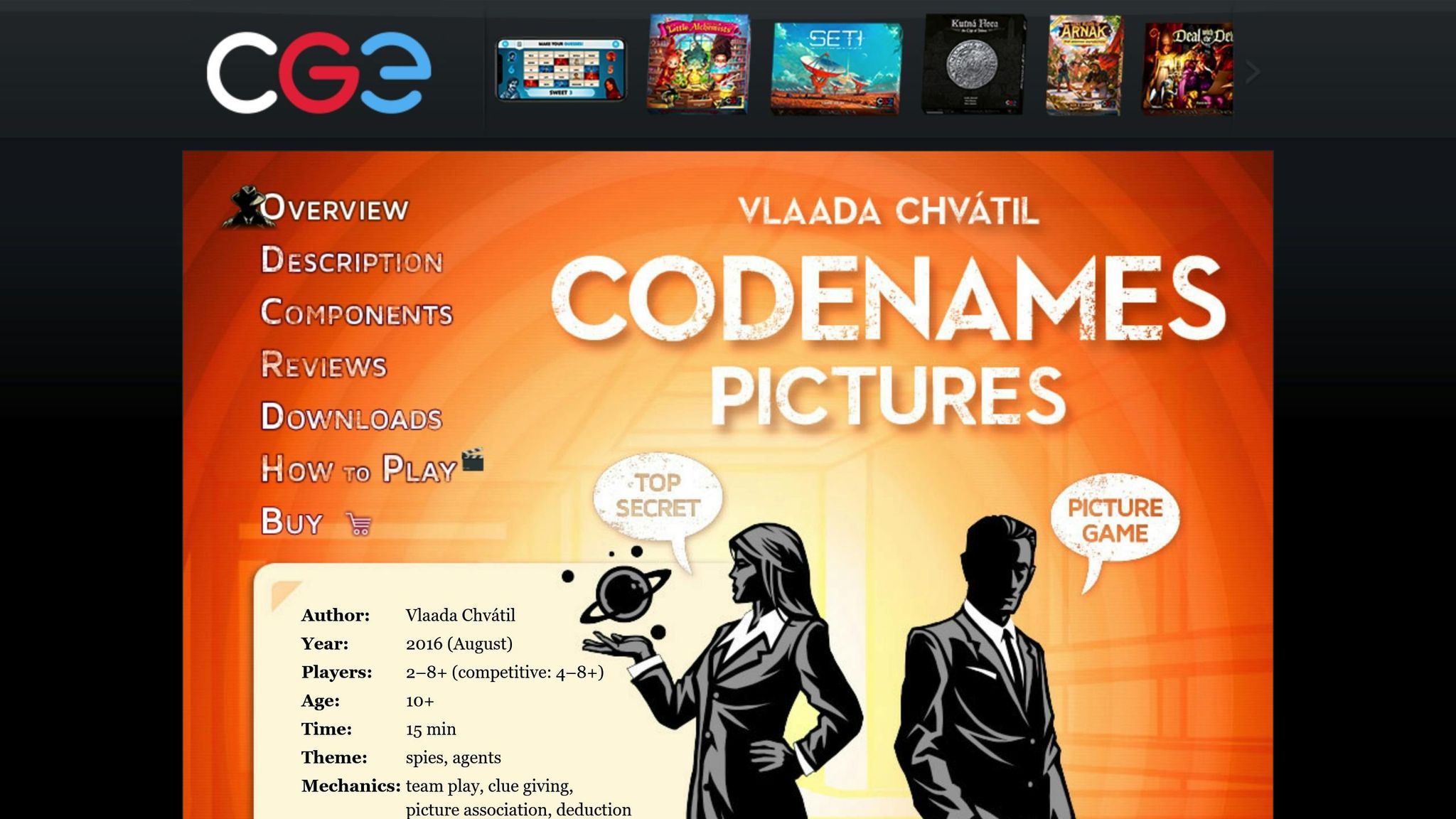
Codenames: Pictures puts a visual spin on the classic word-guessing game, making it perfect for preteens. Instead of words, players work with images, encouraging sharp observation and imaginative thinking instead of relying on vocabulary skills. This sets it apart from more text-focused board games.
In the game, the Spymaster provides a one-word clue to guide teammates in identifying the correct picture cards. It’s a fun way to practice clear communication and build connections between visual cues.
You can adjust the setup - like simplifying the layout or slowing the pace - to make it easier for younger players while keeping the game engaging and competitive.
Brain Games also offers Codenames: Pictures in several languages, making it accessible to families from various backgrounds who want to enjoy this visually-driven and strategic game.
sbb-itb-1ed942f
6. Exploding Kittens

Exploding Kittens is a quick and entertaining card game that’s perfect for preteens. Its easy-to-learn rules and quirky, funny illustrations make it a hit for kids and adults alike. Players can dive into the action right away, mastering the gameplay while enjoying the amusing artwork. It’s a great pick for family game nights, offering plenty of laughs and excitement.
Ready for another game that puts young strategists to the test? Let’s keep going!
7. Dixit
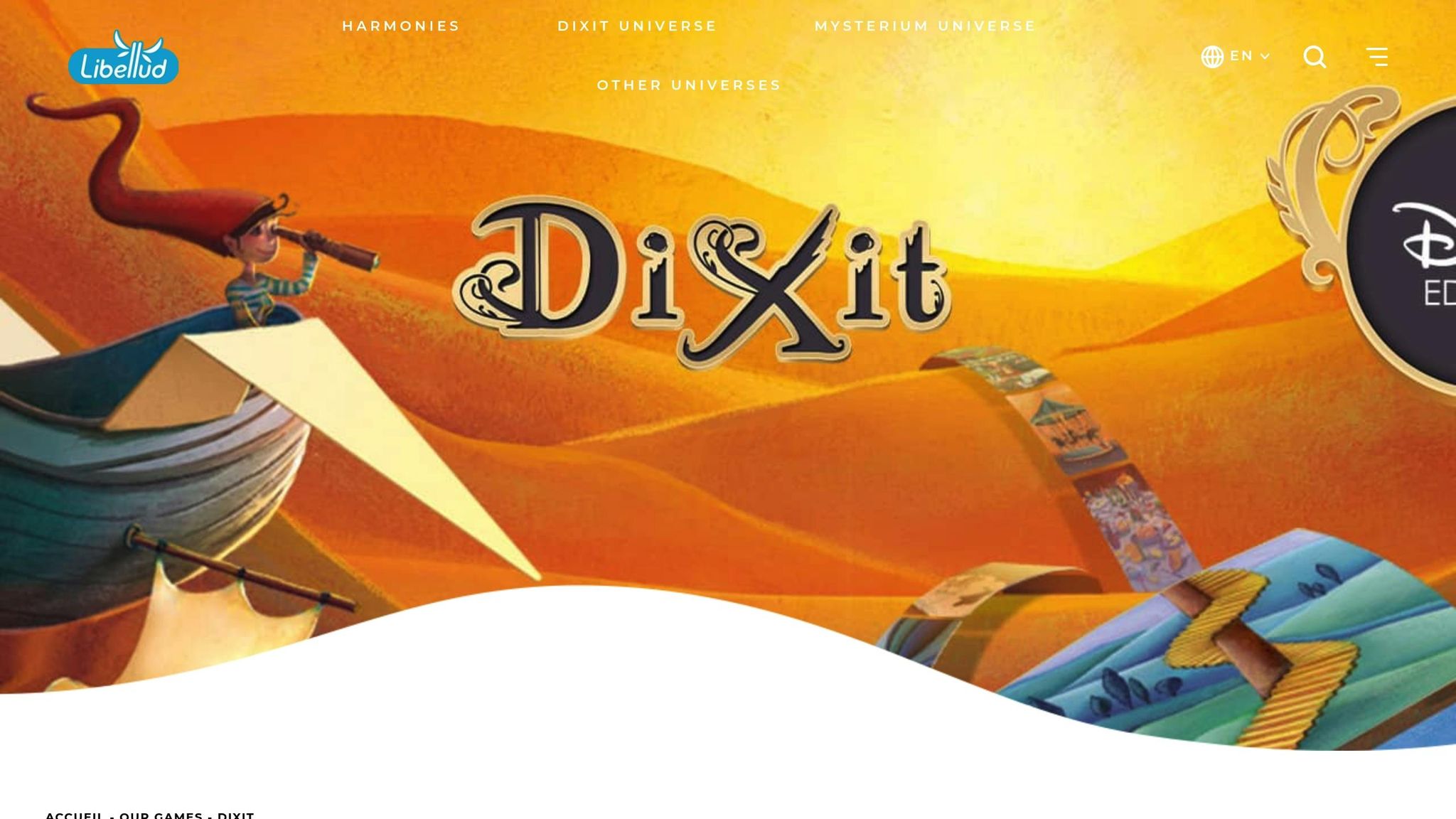
Dixit stands out with its storytelling charm, stunning artwork, and engaging gameplay. Its mechanics encourage players to think outside the box and embrace their imagination.
Here’s how it works: Players take turns being the storyteller. The storyteller picks a card with a dreamy, surreal illustration and gives a short clue - this could be a word, phrase, or even a sound. The trick is to make the clue intriguing but not too obvious, leaving room for others to interpret creatively.
This open-ended style of play makes Dixit a hit with all age groups, from kids to adults. It’s a great way to bring the family together for a session of imaginative fun.
8. Pandemic: The Board Game

Pandemic is a cooperative strategy game designed for players aged 9–12, where everyone works together as disease control specialists to save the world. It’s a great way to encourage teamwork and strategic thinking in an engaging format.
This version of Pandemic simplifies the rules while keeping the gameplay exciting. Players take on specialist roles, each with unique abilities, and travel across a world map to treat outbreaks and discover cures. The simplified mechanics make it easy for younger players to dive in while still offering plenty of strategic choices.
What keeps preteens hooked is the adjustable difficulty. Games last about 45 minutes, making it perfect for holding their attention. The cooperative nature of the game helps improve communication, problem-solving, and resource management skills.
For first-time players, it’s best to start with the basic roles and use the introductory difficulty level with fewer epidemic cards. This allows everyone to focus on teamwork and learning the mechanics.
The game also introduces topics like global health, geography, and crisis management in a way that’s easy for younger players to grasp.
| Game Feature | Benefits for Ages 9–12 |
|---|---|
| Cooperative Play | Encourages teamwork and communication |
| Adjustable Difficulty | Helps players develop skills gradually |
| Specialist Roles | Promotes strategic role assignment |
| Short Sessions | Keeps kids engaged in under an hour |
| Educational Themes | Explores global health and geography |
Brain Games carries both the classic Pandemic and the simpler Pandemic: Family Edition, so you can pick the version that suits your players best.
9. Blokus
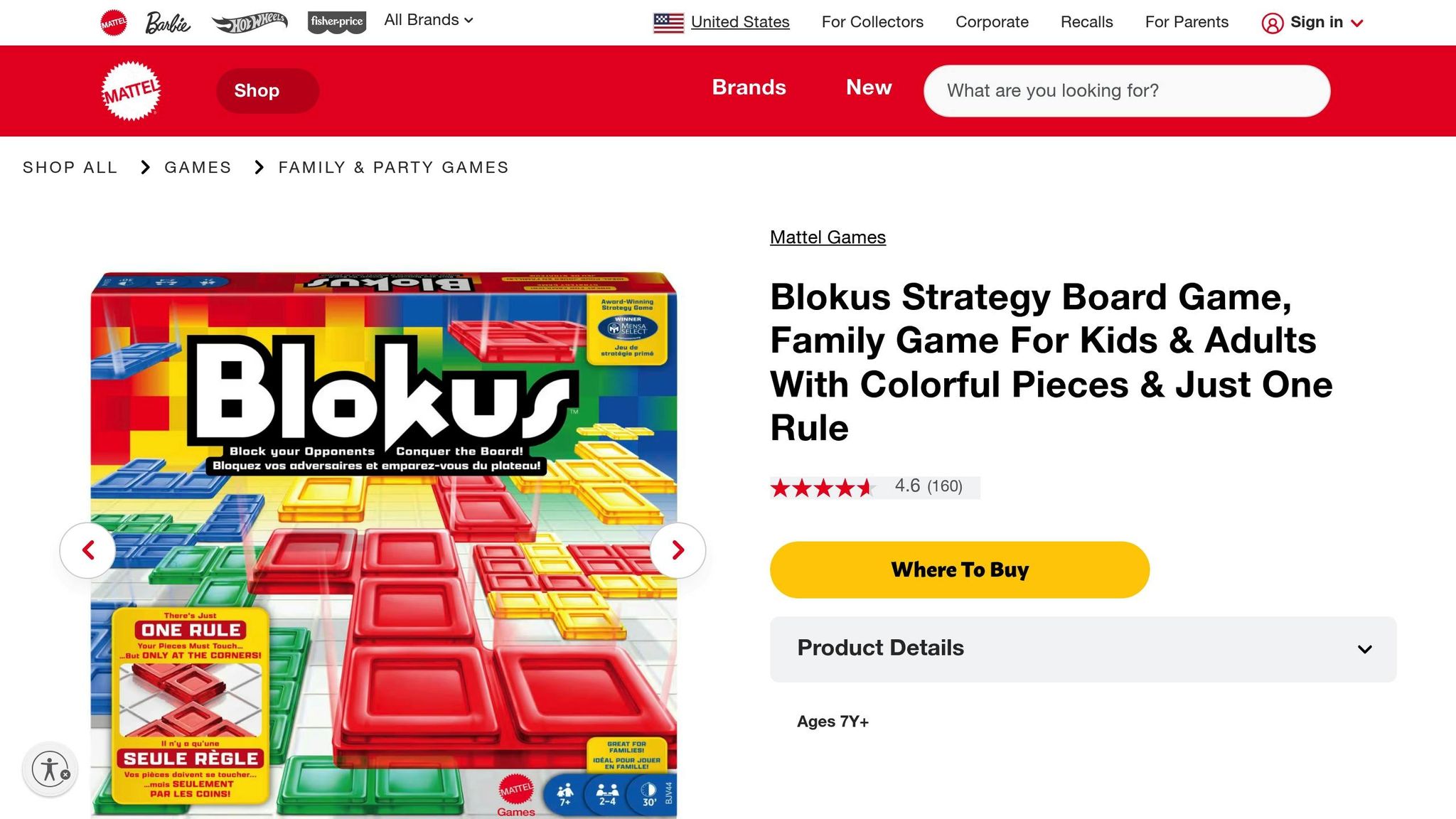
Blokus is a game that tests spatial reasoning and planning, making it a great fit for kids aged 9–12. The game includes 21 uniquely shaped pieces, and the goal is to place as many of your pieces on the board as possible while blocking your opponents. The catch? Each new piece must touch at least one corner of your own color without sharing edges.
The rules are simple to pick up, but the strategy deepens as players get better. With support for 2 to 4 players, it’s a fantastic choice for family game nights.
If you're interested in getting a copy, Brain Games (https://brain-games.com) offers the classic version as well as a travel-friendly Blokus To Go, perfect for playing at home or while traveling.
Blokus helps improve skills like spatial reasoning, strategic thinking, and problem-solving.
10. Ice Cool
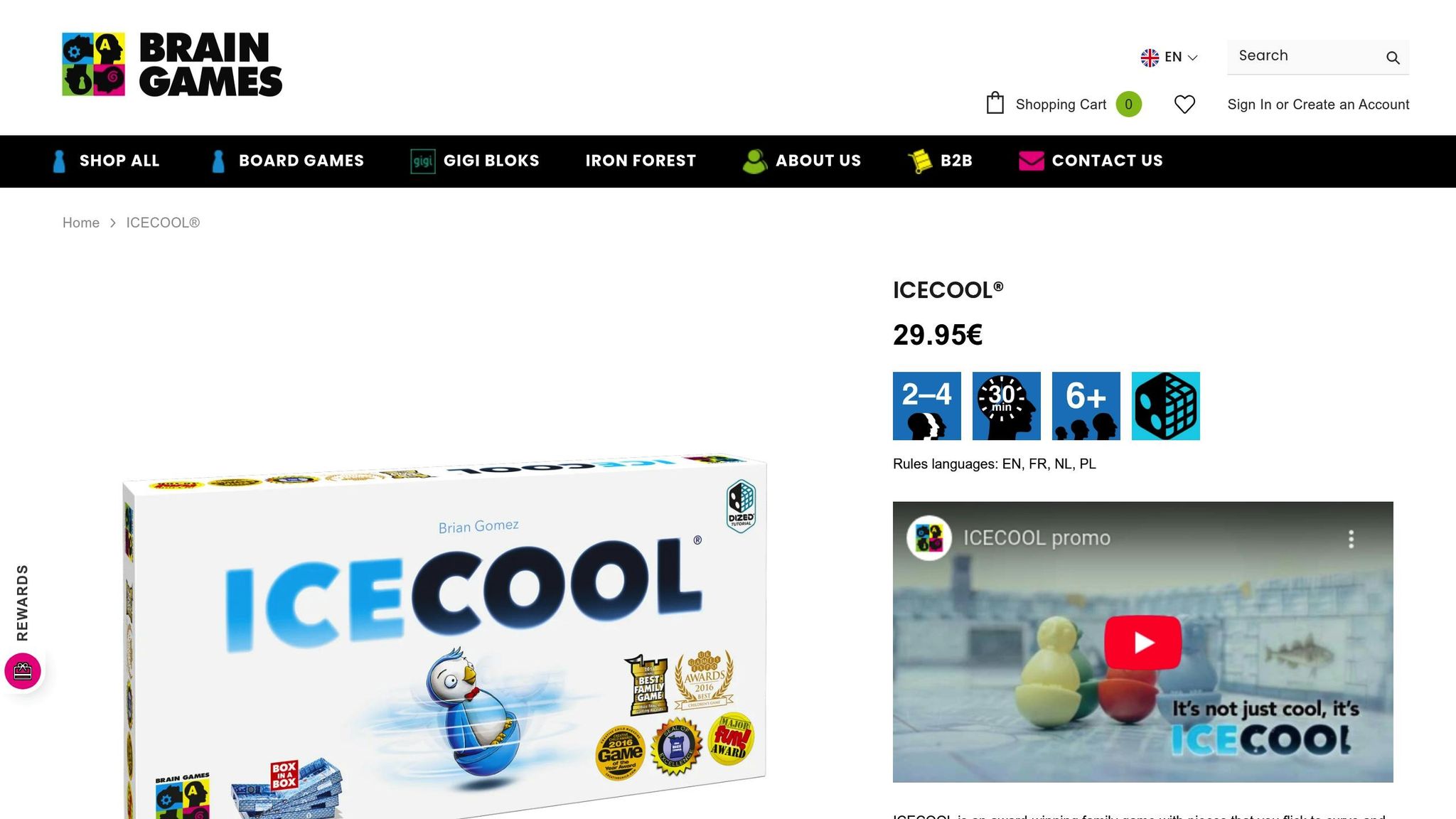
Wrapping up our list is Ice Cool, a game that mixes fun gameplay with physical skill. Created by Brain Games Publishing, this flicking game has earned awards for its unique design. Players flick penguin figures through a school-themed setting, making it especially fun for kids aged 9–12.
The flicking mechanic adds a layer of physical precision, keeping the game simple yet entertaining.
You can check out Ice Cool at Brain-Games.com.
Conclusion
The board games we've covered for ages 9-12 strike a great balance between fun and skill-building. These games not only entertain but also help kids develop critical thinking, strategy, and teamwork in an engaging way.
This selection offers a mix of cooperative and competitive options. Games like Pandemic or Codenames: Pictures encourage teamwork, while titles such as Carcassonne or Catan: Junior challenge players to think strategically. For lighter, quick-start options, try Kingdomino or Exploding Kittens - perfect for easing into game nights.
To keep things exciting, rotate your game choices and set aside regular playtimes, like Friday evenings. Starting with cooperative games can build teamwork and confidence, then you can gradually introduce more complex, strategy-driven games as kids get more comfortable.
Whether you're aiming to strengthen family connections or teach valuable skills, these games provide the ideal mix of entertainment and growth for 9-12-year-olds. They promise hours of meaningful play while keeping young minds actively engaged.






